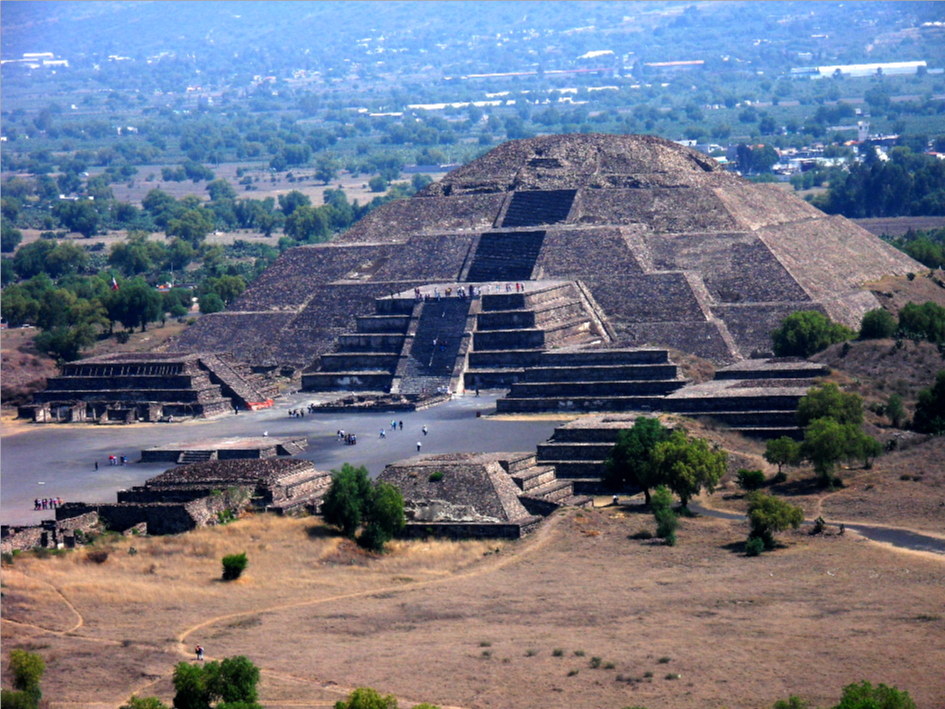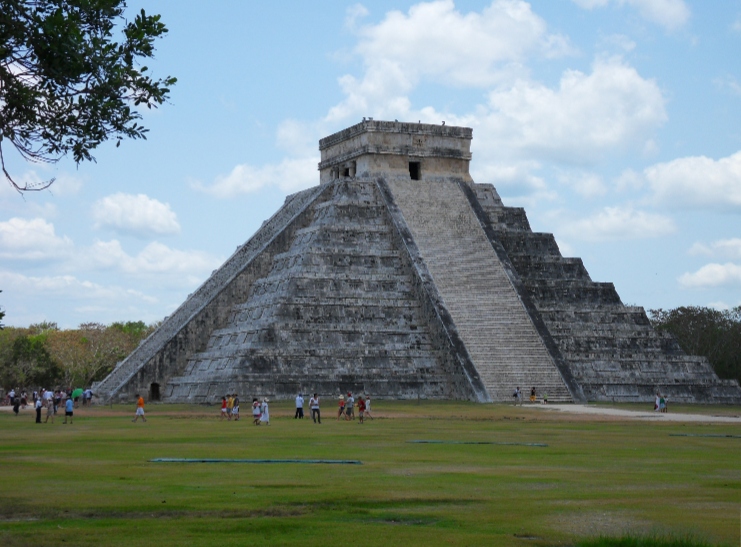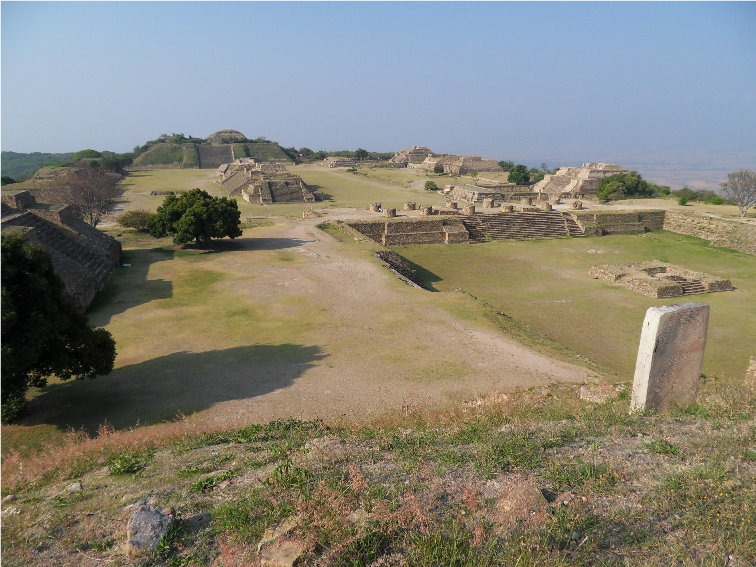


|
|
||
|
|
Chacchoben Archaeological Site
Chacchoben is located just south of the Riviera Maya, and within an hour’s drive from Costa Maya. Its name means "The Place of Red Corn," which is derived from a nearby village, its original name is not known. Evidence suggests that Chacchoben was a settlement as far back as 1000 BCE although it is believed that the site was abandoned and reoccupied a number of times and it is known that most of the structures at the site were modified or restored a number of times most notably from 300 – 360 AD although the buildings in the main groups which can be seen today date from 700 AD. READ MORE
Although there was a city in this location as far back as 600 AD Chichen Itza really developed in the 9th century when the cities of Palenque and Tikal were deserted by the Mayas who moved north into the eastern part of Yucatán. It was, however, in the 10th century that the city was to become one of the largest Mayan cities that was to dominate the area from central Yucatán to the north coast and down the east and west coasts of the peninsula. It was to retain its dominance for 200 years. READ MORE
Copalita Copalita Archaeological Site
Copalita is located on a cliff overlooking the ocean, ten miles from Huatulco. Its name comes from the large amount of copal found in the area. Copal is a tree resin used as incense during ceremonies, a common substance found across Mesoamerican cultures. The earliest remains of the site date back 2,500 years from the time of the Zapotec. In fact, Copalita was the first Zapotec archaeological site found in the Huatulco area, and the only site ever built by the ocean on Mexico’s Pacific coast. READ MORE
Located close to the northern coast of the Yucatan, Dzibilchaltun was one of the oldest and most populated settlements in the Yucatan. Dzibilchaltun means “place where there is writing on flat stone”. The population maintained themselves with a maritime and coastal economy in addition to agriculture. It is believed that the site was inhabited from around 300 BCE until the Spanish conquest. The site was at its height during the Late Classic period (600-900 AD) when it had a population of 20,000 inhabitants (although this has been put as high as 40,000) and covered an area of approximately 9 sq kms. READ MORE
Kabah
Located 18 km south Uxmal and connected to it by a raised pedestrian causeway 5 meters wide with monumental arches at each end is the city of Kabah: The connection between the two sites indicates its importance. It is thought that in early times Kabah and Uxmal were adversaries, but that they eventually became allies with Kabah becoming the second city in importance next to Uxmal. READ MORE
Izapa Izapa Archaeological Site
Located in the State of Chiapas close to the Guatemala border below the Tacaná Volcano, the site is privately owned and is leased to the National Institute of History and Anthropology, thus enabling visitors free access to the ruins. Although it covers an area of some 200 hectares and consists of 13 plazas, most of the site has still to be uncovered and renovated, which gives it a mistaken impression of being of minor importance. READ MORE
Metropolitan Cathedral National Palace Basilica (Old) of Our Virgin Mary Guadalupe Built in 1695 -1709 at the location where the Virgin Mary appeared in 1531. The Basilica is constructed in Baroque architectural style with some beautiful fittings. Over the years it developed structural problems that led to the construction of the New Basilica adjacent to this one in 1974 - 1976. READ MORE Basilica (New) of Our Lady of Guadalupe Oaxaca Oaxaca (Our Lady of the Assumption) Cathedral Puebla Puebla Cathedral (Cathedral of Our Lady of the Immaculate Conception) The Cathedral of Our Lady of the Immaculate Conception in Puebla is one of the most impressive and important cathedrals in Mexico. Construction took nearly 100 years, starting in 1575 and being completed in 1690, although it was consecrated in 1649. It contains some beautiful altars with the highlight being the Neoclassical style main altar constructed in the late 18th century which is adorned with statues of saints and religious figures. READ MORE Church of Santo Domingo
Mitla, located in the southern state of Oaxaca, is an important archaeological site which dates to about 900 BCE. It is renowned for its detailed mosaic fretwork and geometric designs. Initially a religious centre for the Zapotecs, it was later influenced by the Mixtec culture. The site includes tombs and structures with finely crafted stone mosaics, demonstrating advanced craftsmanship. READ MORE
Monte Alban
Established in 500 BCE in the Valley of Oaxaca by the Zapotecs, Monte Alban was one of the first cities in the Americas and was to become the main centre for government and have a significant effect on the development of the arts and science. It reached its height in the years 350 – 550 AD during the classical period. Around 800 AD the city began to lose its power to the Mixtecs and cities such as Mitla and by 850 AD the soil around Monte Alban was exhausted and the city was virtually deserted. In the years that followed it became a sacred site to the Mixtecs who would visit it but did not occupy it, although considering it a sacred site they would bury their dead there and a number of tombs have been found and exhibits of these can be seen in the on-site museum. READ MORE
Palenque
Although the church dates from 1903, when the foundations were laid, a small chapel dedicated to the Virgin Guadalupe existed on the site at that time. READ MORE
Teotihuacán Archaeological Site  Located 30 miles northeast of Mexico City in the Valley of Mexico, Teotihuacán is one of Mexico’s most popular archaeological sites and contains some of the largest pyramidal structures built in the pre-Columbian Americas. Located 30 miles northeast of Mexico City in the Valley of Mexico, Teotihuacán is one of Mexico’s most popular archaeological sites and contains some of the largest pyramidal structures built in the pre-Columbian Americas. Dating back to 100 BCE Teotihuacán was to become the cultural epicentre of ancient Mesoamerica. Yet very little is known about its origins, its people and where they came from or what language they spoke, for although the civilization left many architectural ruins, no trace has yet been found of a writing system. READ MORE
Tulum Tulum Archaeological Site Located along the east coast of the Yucatán Peninsula, Tulum was one of the last cities built and inhabited by the Maya. A contemporary to Chichen Itza, but when that city fell, Tulum consolidated its position, paving the way for its greatest period of expansion. It was probably known by the name of Zama, which means City of Dawn due to it facing east towards the rising sun. READ MORE
Uxmal
Together with Tikal and Chichen Itza, Uxmal most represents Maya Architecture at its best. The name is thought to mean “thrice built” although it has also been suggested that it derives from the word Uchmal, which refers to the future. Although a great deal of work has been carried out at Uxmal - and in fact is still being carried out – not a lot is known about the city. It is believed that it was founded around 500 AD and that most of its development occurred between 700 - 1000 AD when it became a thriving city and a religious centre with great ceremonial significance. READ MORE
|
|
|
|
||
All Photographs were taken by and are copyright of Ron Gatepain
| Site Map |

